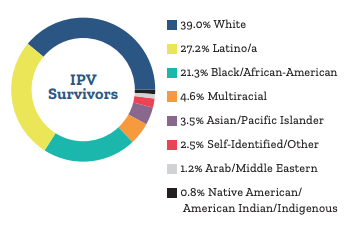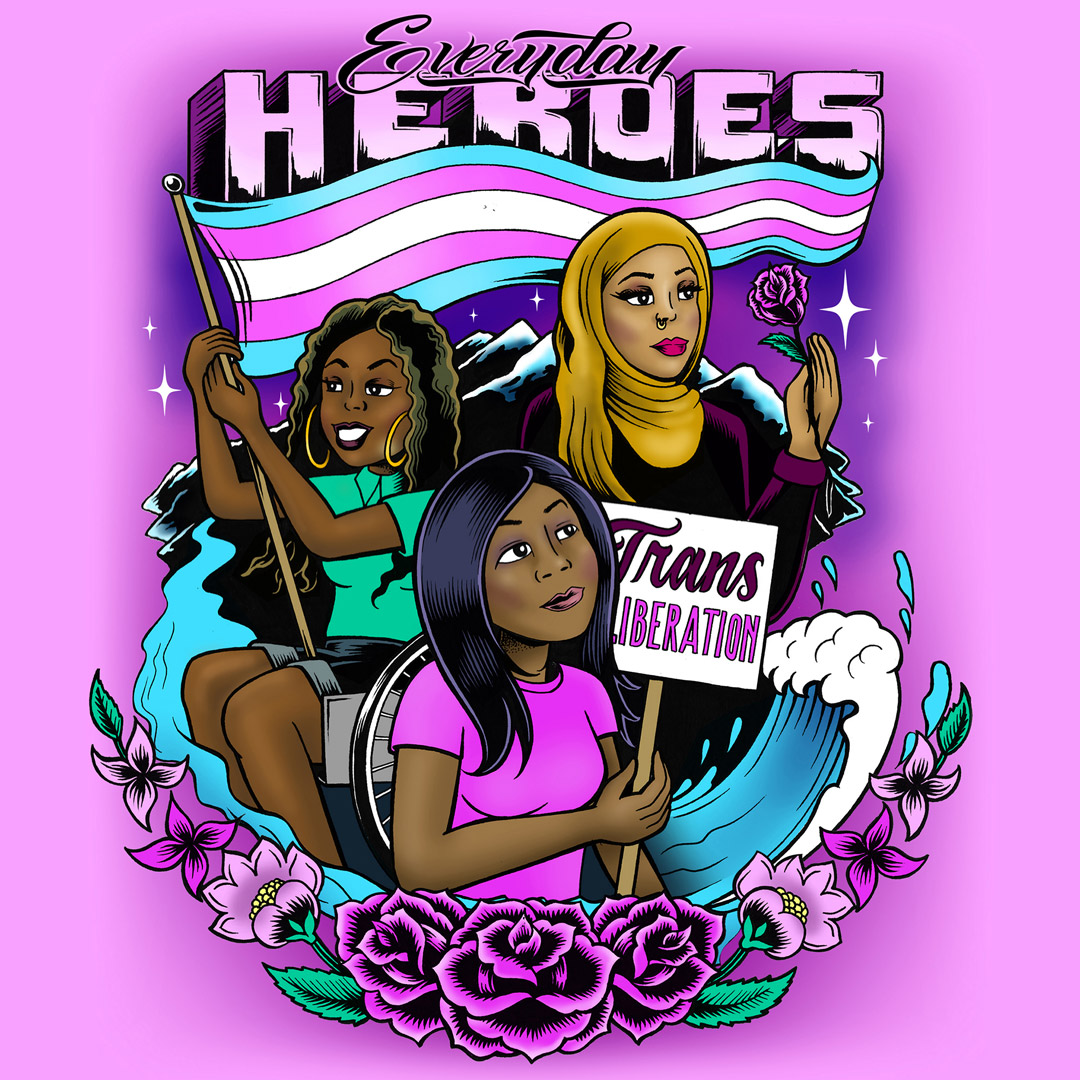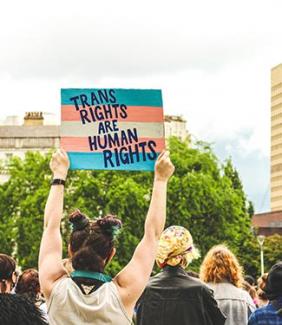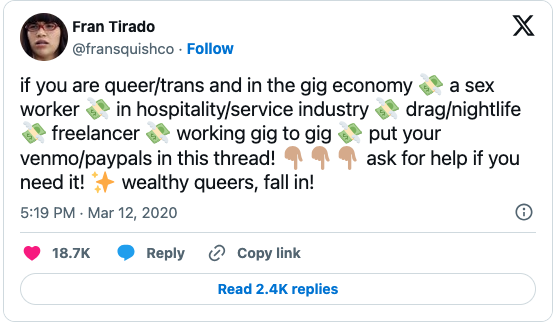By Kara Cook, NRCDV American Rescue Plan Coordinator
“How many years has it taken people to realize that we are all brothers and sisters and human beings in the human race?” – Marsha P. Johnson
Due to transphobia, transmisogynoir, and other systems of oppression rooted in white supremacy, transgender and non-binary individuals and their communities are often looked down upon and shamed for who they are. Many experience discrimination daily, whether it is from family, friends, the public, or societal institutions. In most states across the U.S., trans folks have been subject to an onslaught of targeted legislative attacks over the last few years. Unfortunately, a great number of these individuals face discrimination in and inaccessibility to healthcare. During the COVID-19 pandemic, this only worsened. It is without a doubt that the COVID-19 pandemic was and still is a very real threat to the health, safety, and well-being of individuals across the world. However, this was not the only pandemic happening. Domestic violence* rates increased during COVID-19 by 8.1% according to a report by the National Commission on COVID-19 and Criminal Justice. Intimate partner violence (IPV) has plagued trans and non-binary individuals for decades; however there is very little information on its impacts. According to the 2015 U.S. Transgender Survey, over half of the respondents (54%) stated that they had experienced IPV in their lifetime.
*In this TAQ, we are using the terms “domestic violence” (DV) and “intimate partner violence” (IPV) interchangeably.
COVID-19 and its impact on transgender and non-binary individuals
We know that access to healthcare is already an obstacle for trans and non-binary folks. During the pandemic, accessing healthcare became even more difficult for this group. Access to gender-affirming care was cut drastically due to non-emergency medical care being delayed. Because of this, many transgender individuals could not receive critical surgeries and other interventions. In addition to surgeries being delayed, access to hormonal therapy diminished as healthcare providers postponed gender-affirming care. Consequently, puberty suppression by trans and non-binary people was affected. Due to the nation-wide shutdown, trans and non-binary individuals could not access the courts in order to get their name changed. Because of this, many trans and non-binary individuals could not access gender-affirming care under their new name. Not being able to use their new name sets trans and non-binary individuals back and can be a jarring experience. It can also lead to significant mental health impacts, including exacerbating dysphoria.
On the contrary, promoting access to equitable healthcare has been shown to have positive impacts on the mental health of trans and non-binary folks. Early insights from the 2022 U.S. Transgender Survey found that almost all respondents who had at least one form of surgery in relation to their transition reported that they were either a lot or a little more satisfied. One respondent, Taylor, noted:
“Obtaining hormone therapy through the informed consent model and having access to surgery has definitely changed my life for the better. It certainly didn’t fix all of my problems instantly, but it fixed a lot of problems that my dysphoria caused. Now that I’ve been on HRT and had surgery, I can live my day to day life without pain, dissociation, and misery” (February 2024).
 As we know, the COVID-19 pandemic and shutdown isolated most of the population. However, this social isolation was especially harmful for trans and non-binary people. One issue faced by this group is lack of familial support; trans and non-binary people may rely heavily on peer groups and organizations that cater to them as sources of support. With the shutdown, access to these spaces and other trans and non-binary people was diminished.
As we know, the COVID-19 pandemic and shutdown isolated most of the population. However, this social isolation was especially harmful for trans and non-binary people. One issue faced by this group is lack of familial support; trans and non-binary people may rely heavily on peer groups and organizations that cater to them as sources of support. With the shutdown, access to these spaces and other trans and non-binary people was diminished.
Domestic violence and its impact on transgender and non-binary individuals
Unfortunately, domestic violence against trans and non-binary individuals is often overlooked in conversations around domestic violence. These individuals typically go unnoticed and not taken seriously by mainstream service providers when sharing their experiences with domestic violence. In the 2015 U.S. Transgender Survey, the study found that 54% of respondents reported experiencing some form of domestic violence in their lifetime. Although trans survivors’ experiences of domestic violence may be similar to those of cisgender survivors, they often experience additional and specific abusive tactics that service providers should be aware of. One of the main tactics that abusers use towards their trans or non-binary partners is invalidating their gender identity; this usually occurs when the abuser calls the individual the wrong pronouns, name, or calls them “it.” In addition, an abusive partner may tell their trans or non-binary partner that they “are not a real man or woman” or criticize their body or appearance. These tactics are considered both emotional and verbal abuse. Abuse of this kind may lead to depression, anxiety, negative self-esteem, and other problems for the survivor. The Hotline found that 92% of survivors reported emotional and verbal abuse.
While trans and non-binary survivors reported emotional and verbal abuse, a significant number also reported physical abuse. According to the 2015 U.S. Transgender Survey, 42% of participants reported some type of physical harm, including threats of violence. Most notably, in the National Intimate Partner and Sexual Violence Survey, over one-third (35%) of trans and non-binary individuals stated they had experienced physical abuse from an intimate partner compared to 30% of the U.S. adult population. This shows that trans and non-binary people experience intimate partner violence at higher rates than their non-transgender and gender-conforming counterparts.
 Among trans and non-binary survivors reporting IPV, the impact of multiple and intersecting forms of oppression is also very clear. For example, according to the National Coalition of Anti-Violence Programs (NCAVP), most survivors reporting IPV to NCAVP member programs in 2017 identified as people of color. Of the survivors who reported experiencing intimate partner violence, 59% identified as people of color and 39% identified as white. For identities of color, the most commonly selected identity was Latinx (27%) and Black (21%).
Among trans and non-binary survivors reporting IPV, the impact of multiple and intersecting forms of oppression is also very clear. For example, according to the National Coalition of Anti-Violence Programs (NCAVP), most survivors reporting IPV to NCAVP member programs in 2017 identified as people of color. Of the survivors who reported experiencing intimate partner violence, 59% identified as people of color and 39% identified as white. For identities of color, the most commonly selected identity was Latinx (27%) and Black (21%).
How COVID-19 and domestic violence impacts transgender and non-binary individuals
The twin pandemics of COVID-19 and domestic violence negatively impacted the LGBTQ+ community at a higher rate than the non-LGBTQ+ community. According to a survey from the Human Rights Campaign Foundation and PSB, it was found that LGBTQ+ people were twice as likely to experience intimate partner violence since the onset of COVID-19. Even more interesting, the duration and frequency of IPV was said to have been higher for LGBTQ participants (77%) than their non-LGBTQ counterparts (68%). In another study in the National Library of Medicine, it was found that transgender individuals experienced the highest rate of intimate partner violence during COVID-19 compared to any other group. As for non-binary individuals, they also experience higher rates of intimate partner violence than their gender-conforming counterparts. As previously mentioned, the inability to access gender-affirming care was related to rates of depression during COVID-19, which in turn increased the risk of experiencing domestic violence.
 How can advocates support transgender and non-binary survivors?
How can advocates support transgender and non-binary survivors?
In order to provide support to transgender and non-binary survivors, it is imperative that advocates and agencies alike educate themselves on biases and issues that these individuals face. Self-reflection is essential to being an inclusive and informed advocate. The special collection, Serving Trans and Non-Binary Survivors of Domestic and Sexual Violence includes resources offering guidance to domestic and sexual violence organizations and advocates on providing inclusive, culturally responsive, and affirming services to trans and non-binary survivors. Additionally, organizations and individual providers can obtain training, technical assistance, and resources from FORGE. FORGE strives to create a world where every individual feels safe, supported, respected, and empowered. They help advocates understand what the field needs and how to best respond to trends and current issues as it relates to supporting trans and non-binary survivors.
It’s critical to highlight as well that trans and non-binary survivors and their communities are resilient and resourceful. They have always been, and they always will be. Despite the myriad challenges that oppressive systems, COVID-19 and intimate partner violence have presented, several organizations and groups have found creative ways to support survivors and their communities. From sharing crowdsourced fundraising opportunities to donating to local and national nonprofits, caring for each other within marginalized groups have taken many forms. The report, Supporting LGBTQ Survivors of Violence During the COVID-19 Pandemic offers some great and innovative solutions.
For more information:
- Serving Trans and Non-Binary Survivors of Domestic and Sexual Violence
- A Know Your Rights Guide for Transgender People Navigating COVID-19
- Meeting the Needs of LGBTQ+ People During COVID-19 and Beyond
- 2015 U.S. Transgender Survey
- 2022 U.S. Trans Survey: Early Insights
- Uniting Isolated Voices: Girls and Gender-Expansive Youth During COVID-19
- Supporting LGBTQ Survivors of Violence During the COVID-19 Pandemic
- 2017 LGBTQ and HIV-Affected Hate and Intimate Partner Violence Report
- Trans-Specific Power and Control Tactics
- Is Your Agency Ready to Serve Transgender and Nonbinary Clients?
- Gender Neutral Pronoun Chart
















